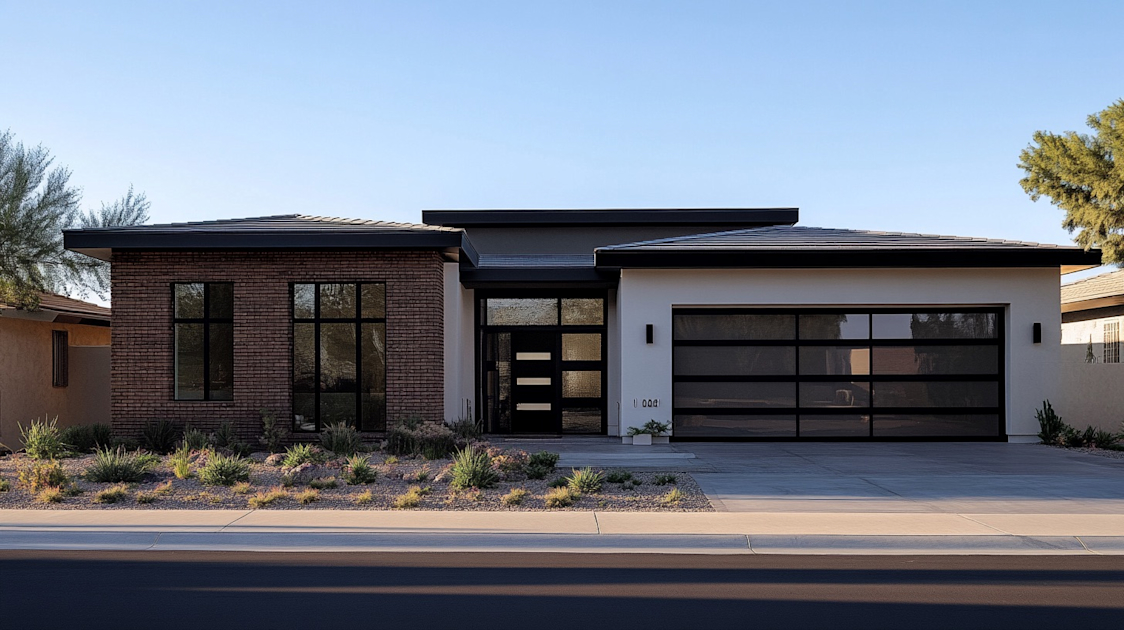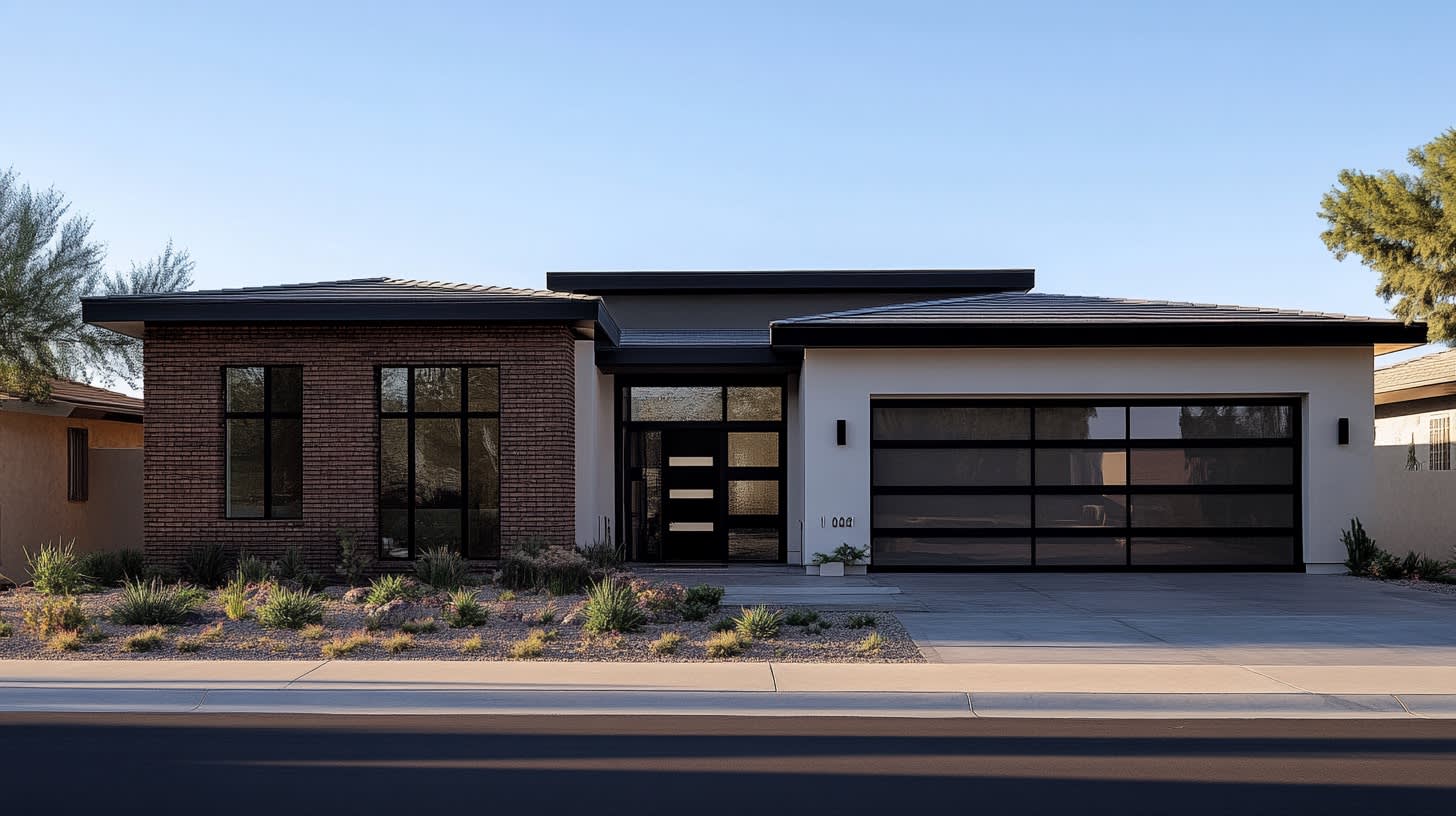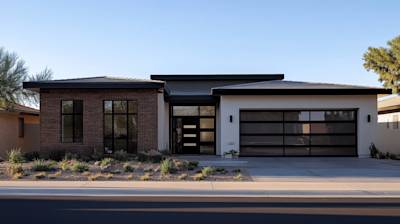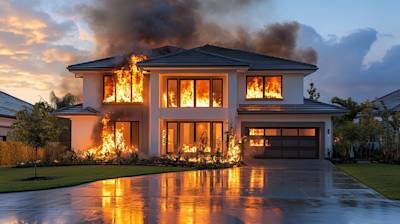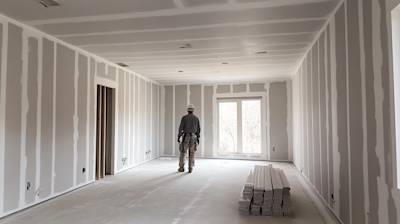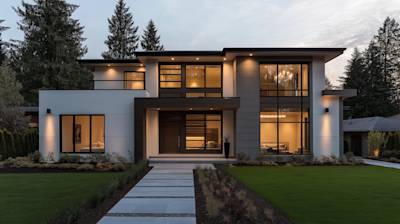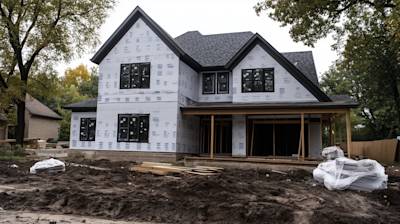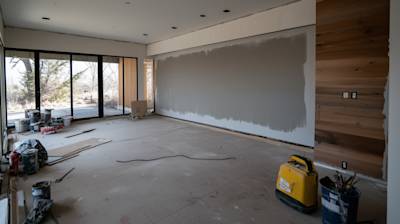The world of construction and architecture is continuously transforming. Embracing luxurious designs without sacrificing durability and affordability has become the trend in modern construction, and this is where brick veneer steps in. In this comprehensive guide, we examine why brick veneer is gaining popularity and how it alters the dynamic of architectural aesthetics.
Understanding What Brick Veneer Is
Brick veneer, also known as facing brick, is not a full-sized brick but a thinner surface layer cut from a whole brick. A brick veneer wall consists of a load-bearing frame, which can be made from wood or metal, and a single layer of bricks attached to the frame. The main reason architects and home builders rely on this material is that it provides the aesthetic of a full brick wall, but with reduced costs and less bulky construction.
How Are Brick Veneer Walls Constructed?
To construct a brick veneer wall, metal brick ties are screwed onto the load-bearing wall, and mortar is spread on the brick ties. The bricks are then "veneered" or attached to the wall, layer by layer, using the mortar as an adhesive.
Steps to Construct a Brick Veneer Wall:
- Prepare the Surface
- Install the Brick Ties
- Apply the Mortar
- Veneer the Bricks
- Complete with Mortar Joints
To provide additional strength and temperature insulation, it's crucial to ensure that there is a break between the brick veneer and the frame. This gap helps prevent thermal bridging and ensures the structural integrity of the wall.
The Different Types of Brick Veneer
Traditionally, brick veneer was offered in a restricted palette of designs. Today, however, the manufacturing process has evolved, opening up a diverse selection of brick veneer. This means varied aesthetics for architects and homeowners to choose from.
The Four Major Types of Brick Veneer Include:
- Original Brick Veneer: This is cut from natural bricks, giving your construction an authentic brick finish.
- Manufactured Brick Veneer: A more cost-efficient option, these are manufactured from high-quality cement and aggregates.
- Stone Brick Veneer: Cut from natural stone, this type caters to those seeking more polished aesthetics.
- Faux Brick Veneer: This is made from lightweight polyurethane and offers the best cost-effectiveness while not sacrificing looks.
Each type has unique properties, beautifying both exterior and interior applications.
The Aesthetical Appeal of Brick Veneer
Brick veneer offers the luxurious look of traditional brick walls while being budget-friendly. The warm, welcoming ambiance that it creates has made it a popular choice for many homeowners and commercial establishments. The wide array of designs, textures, and colors allow architects and home builders to experiment with innovative patterns, breathing life into their architectural designs. From the crimson ruggedness of original brick veneer to the slate gray elegance of stone brick veneer, there is a design for every aesthetic need.
Brick Veneer Maintenance and Care
Brick veneer walls are not just visually appealing but also highly durable. But like all materials, brick veneer needs regular maintenance and care.
- Insect and pest Prevention: The gap between the veneer and the load-bearing wall should be adequately sealed to avoid pest infestation.
- Weatherproofing: Depending on your region's climate, brick veneer may need some weatherproofing to prevent water seepage or frost damage.
- Regular Cleaning: Brick veneer can accumulate dust over time, and a simple wash with a mild detergent solution can keep the wall looking fresh.

Frequently Asked Questions about Brick Veneer
Can Brick Veneer Be Painted Over?
Absolutely, brick veneer can easily be painted over if you wish to infuse a new color into your exterior or interior decoration. Ensure that the veneer surface is clean and free of any dirt or loose particles. You may need to apply a primer first before applying your chosen paint to ensure a glossy and perfect finish.
How Thick is Brick Veneer?
The thickness of brick veneer can slightly vary, but generally, a standard brick veneer measures about three-quarters of an inch to an inch thick. This thin profile makes them ideal for surfaces that would not be able to support the weight of typical full-sized brick materials.
What is The Lifespan of Brick Veneer?
The durability and lifespan largely depend on the quality of the bricks and installation process. However, on average, when properly maintained, brick veneer can last anywhere between 50 to 100 years. This is one reason why many homeowners and builders prefer brick veneer for their construction.
Is Brick Veneer Resistant to Fire?
Yes, most brick veneers are highly resistant to fire. This is because they are typically made of clay, which is a non-combustible material. Thus, they can provide an extra layer of protection to your home against potential fire outbreaks.
Can Brick Veneer Be Installed on Any Surface?
Generally, brick veneer can be installed on most surfaces. However, the surface has to be sturdy enough to support the weight of the veneer. It's also important that the surface is flat and smooth for secure installation.
How to Clean Brick Veneer?
Cleaning brick veneer is straightforward. You'll need a bucket of warm water and a mild detergent. Dip a scrubbing brush into the water-detergent mixture and gently scrub the veneer. Once the dirt has been loosened, rinse the wall with clean water. Avoid harsh chemicals as they can damage the veneer surface.
Does Brick Veneer Require Regular Maintenance?
The upkeep for brick veneer is relatively minimal. Regular cleaning and occasional re-pointing of the mortar joints is usually all that's required. An annual inspection should be conducted to ensure there are no cracks or movement in the veneer.
Can Brick Veneer be Used for Interior Walls?
Definitely, brick veneer is not only for exterior walls. It is a great way to add a touch of brick and mortar design to your interior décor without the weight and space limitations of traditional bricks. It is popular for feature walls, kitchen islands, and even fireplaces.
How Much Does Brick Veneer Cost?
The cost considerably varies based on the style of brick veneer you opt for, the area you intend to cover and your geographic location. You should expect to spend between $8 and $10 per square foot although prices can go up for specialty or custom-made veneers.
Can You Install Brick Veneer by Yourself?
Installing brick veneer can be a DIY task if you're comfortable with home improvement projects. However, the installation process is labor-intensive and requires precision and an understanding of your home's specific construction. If you're not confident, it's best to recruit a professional to ensure the veneer is correctly and safely installed.
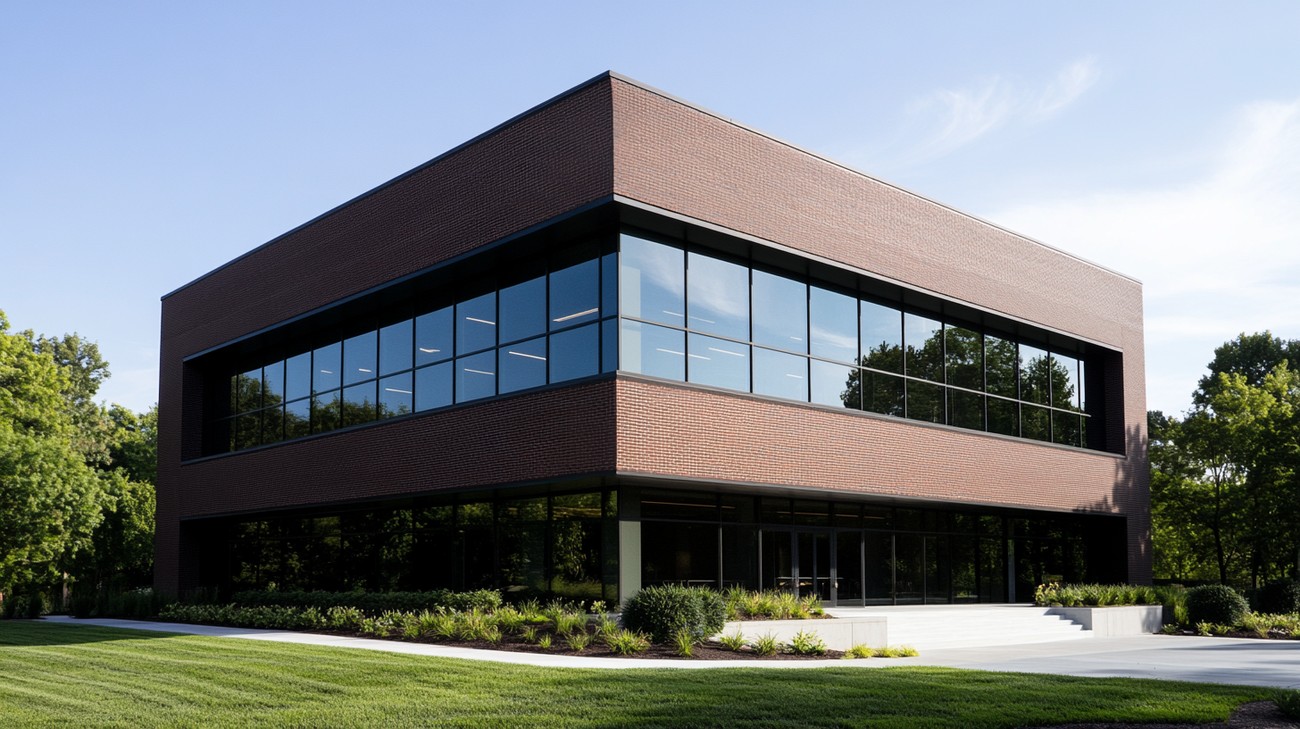
Pros of Brick Veneer
Aesthetically Pleasing
Brick veneers give homes a classic, traditional appearance that remains timeless regardless of contemporary design trends. These veneers are available in a wide range of colors and styles, making it easier for you to customize your property in a way that suits your specific tastes.
Adds Value to Your Property
The richness of brick veneer typically adds significant aesthetic value to a property. This can translate into tangible financial benefit if you decide to sell your home, often enhancing the home's curb appeal to potential buyers.
Durability and Longevity
Brick veneer is highly durable and resistant to many forms of damage including termites, fire, and decay. Moreover, it's known for its longevity; when properly cared for, brick veneer can last for the lifetime of your house.
Low Maintenance
Once installed, brick veneer requires very little maintenance. It doesn't need to be painted or stained to maintain its look, and it's easy to clean.
Energy Efficient
Brick veneer has excellent thermal properties. Its thickness allows it to help keep the interior of your home warm during the winter and cool in the summer, reducing your reliance on energy-consuming heating and cooling systems.
Sound Insulation
Brick veneer also provides excellent soundproofing, which can be a significant advantage if you live in a busy neighborhood or near a loud freeway.
Cons of Brick Veneer
Cost
One of the most significant downsides to brick veneer is that it is costlier than other types of exterior siding such as vinyl or stucco. The higher cost is both in terms of the materials themselves and the labor required to install them.
Expertise Required for Installation
Installing brick veneer is not a simple DYI task. It requires a certain level of skill and experience to ensure the bricks are aligned and properly secured. Additionally, because the veneer must be adhered to the exterior wall, it is crucial that the existing structure can support the weight of the veneer.
Repairs Can Be Difficult
While brick veneer is inherently durable, it is not immune to damage. If cracked or damaged, repairing brick veneer can be a complex process. Sometimes, it's hard to find matching bricks to replace the damaged ones, leading to color inconsistency.
Limited Insulation
While brick veneer does have thermal properties, it does not have the same level of insulation as other materials. This might necessitate the use of additional insulation materials which would contribute to overall costs.
Moisture Problems
Brick absorbs water and if not properly installed, brick veneer can potentially lead to moisture problems inside the house. It requires careful installation and correct use of moisture barriers to prevent any potential damage.
Weight Considerations
Brick veneer is significantly heavier than other siding options. This means that not all structures can support its weight without additional reinforcement. This can add significant cost and complexity to the installation process.

Myths and Misconceptions about Brick Veneer
When it comes to construction, architecture, and interior design preferences, different materials take precedence for various reasons. Brick veneer is one such material that is often shrouded with numerous myths and misconceptions. Time to address them in detail.
Brick Veneer is Not Real Brick
Origin of the Myth
One of the most common misconceptions is that brick veneer is not real brick. This myth could be attributed to the distinctive manufacturing process of brick veneer and the fundamental difference between brick veneer and traditional brick.
The Reality
In reality, brick veneer is made from the same material as full-thickness brick, i.e., clay or shale, and is fired in kilns just like traditional brick. The significant difference is how it is used in construction, which leads us to our next misconception.
Brick Veneer Cannot Provide Structural Support
Origin of the Myth
The traditional brick is applied in a structural role where the bricks are stacked and their weight is carried straight down to the ground. In contrast, brick veneers are often used as a non-structural facade and hence started the myth that they are not capable of providing structural support.
The Reality
While it's true that brick veneer, when used on its own, does not offer structural support, it doesn't mean that it doesn't contribute to the overall strength of the structure. When combined with modern building processes and materials, brick veneer can aid in the overall durability of the building.
Brick Veneers are More Prone to Water Damage
Origin of the Myth
Another common misconception about brick veneer is that it is more susceptible to water damage than traditional brick. This belief may have arisen because veneers have space behind them that enables water infiltration.
The Reality
In reality, brick veneer constructions are designed with built-in water-resistant barriers and drainage planes that help safeguard the interior structure from water damage. These tools function by directing any water that may infiltrate the veneer back out of the facade.
More Expensive Than Full Brick
Origin of the Myth
The idea that brick veneer is more expensive than full brick probably stems from the believe that “thinner” automatically equals “cheap.” This, however, is more of a misunderstanding of their specific uses and benefits than a myth.
The Reality
Financially speaking, it's essential to consider the installation, materials, and labor, not just the cost of the bricks themselves. Typically, brick veneers are less expensive to install compared to full brick due to their lightweight nature, requiring less labor, time, and structural preparation.
Brick Veneers Lack Aesthetic Appeal
Origin of the Myth
This myth seems to stem from the perception that because brick veneer is thinner or lighter than full brick, it must therefore lack the same aesthetic appeal.
The Reality
Contrary to this belief, brick veneer can provide as attractive a facade as full brick. With a wide range of textures, shapes, and colors available, brick veneers offers a host of design possibilities. It can be almost impossible to tell the difference between a well-installed brick veneer and a full brick wall.
In conclusion, brick veneer, although different from traditional full brick, has its own significant benefits. It is real brick, contributes to the durability of a building, offers excellent resistance to water damage, can be less expensive, and promises ample aesthetic appeal. Misunderstandings only lead us away from exploring the potential of such versatile materials. Therefore it is important to shed light on these myths and misconceptions to make a well-informed decision.
Summary
So, there's no denying that brick veneer has a lot to offer. Some may throw shade at it, but the advantages it brings helps get it under the spotlight. Let's just flip back the pages real quick. We've debunked the common misunderstanding that it's a thin, lightweight material. And remember, brick veneer ain't the white horse in a fairy tale. It still has some drawbacks that require careful consideration.
Another thing that pops into my mind about brick veneer is its aesthetic appeal. Its realistic look can trick the best of us into thinking it's traditional brickwork. It surely adds a touch of charm to any house. However, an important thing to note is brick veneer doesn't do much when it comes to structural support. This shouldn't be a dealbreaker, just something to be mindful of!
Finally, just to dot the i's and cross the t's, maintenance is the word to remember with brick veneer. With its porous nature, it needs regular check-ups for any water damage. But the overall upkeep isn't as intimidating as it may seem. A simple yearly inspection will do the trick. Efficiency, looks, and easy upkeep. Yep, brick veneer is the answer for those looking for a budget-friendly and charming house makeover.
About Atlas Stucco
At Atlas Stucco, we are all about transforming homes and businesses in Sacramento, CA, into stunning pieces of art. Based in the heart of California, our experienced team of talented craftspeople specializes in traditional and modern stucco applications. We are committed to quality, pouring heart and soul into each project - be it a residential make-over or commercial revamp. We've been doing this for more than two decades, proving our skill and expertise in stucco application, repair, and restoration. We're keen on details and dedicated to our work, giving you peace of mind knowing that your property is in expert hands. Choosing Atlas Stucco means choosing superior craftsmanship, attention to detail, and outstanding service.
Tags: building materials, home renovation, exterior design,

